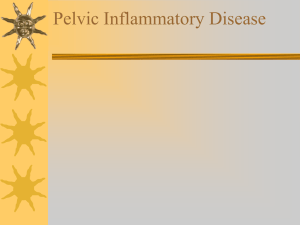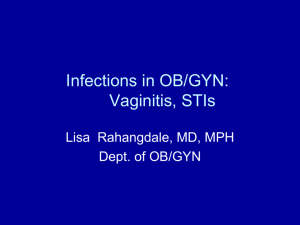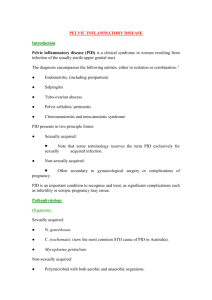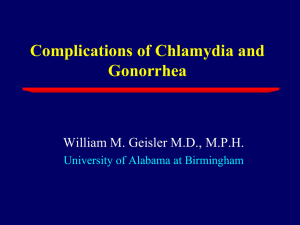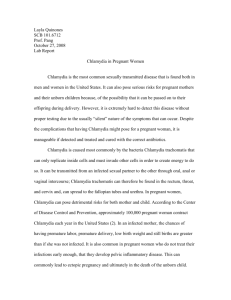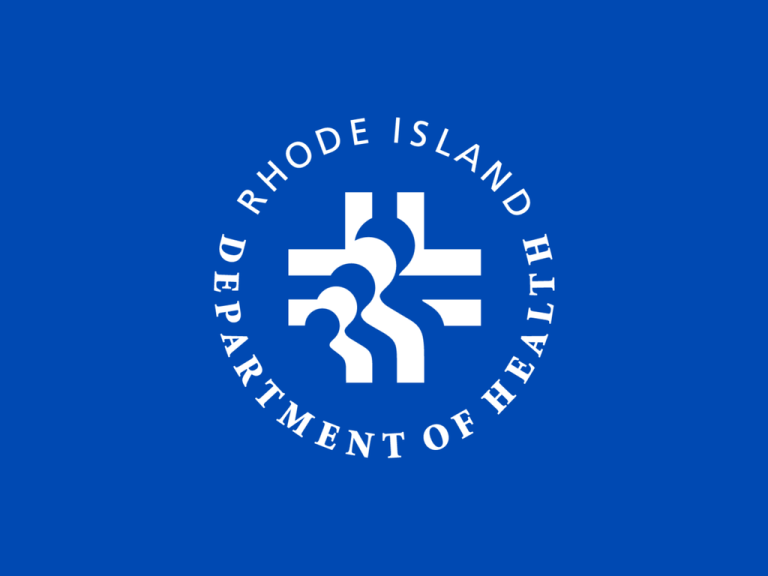
How to Measure the Effectiveness of the IPP
(and all the CT Screening being done)?
**Reduce Infertility**
Ultimate Goal
Reduce PID
Tough to measure
Somewhat measureable,
but there is a question of
how accurately do
providers report PID due to
CT and GC.
Reduce Chlamydia Prevalence
Question:
Do we really have to reduce prevalence or is it enough to have a well
run screening program to find the infections in a timely manner
before PID develops in the female?
Measurable, but
does it accurately
evaluate the
effectiveness of the
IPP. After all, the
more screening
that is being
performed, the
more cases that
will be diagnosed.
Why all the Chlamydia
(and Gonorrhea) Screening?
Prevention of Pelvic Inflammatory Disease by Screening for Cervical Chlamydial Infection
Delia Scholes, Ph.D., Andy Stergachis, Ph.D., Fred E. Heidrich, M.D., M.P.H., Holly Andrilla, M.S.,
King K. Holmes, M.D., Ph.D., and Walter E. Stamm, M.D.
ABSTRACT
Background: Chlamydia trachomatis is a frequent cause of pelvic inflammatory disease. However,
there is little information from clinical studies about whether screening women for cervical
chlamydial infection can reduce the incidence of this serious illness.
Methods: We conducted a randomized, controlled trial to determine whether selective testing for
cervical chlamydial infection prevented pelvic inflammatory disease. Women who were at high
risk for disease were identified by means of a questionnaire mailed to all women enrollees in a
health maintenance organization who were 18 to 34 years of age. Eligible respondents were
randomly assigned to undergo testing for C. trachomatis or to receive usual care; both groups
were followed for one year. Possible cases of pelvic inflammatory disease were identified
through a variety of data bases and were confirmed by review of the women's medical records.
We used an intention-to-screen analysis to compare the incidence of pelvic inflammatory
disease in the two groups of women.
Results: Of the 2607 eligible women, 1009 were randomly assigned to screening and 1598 to
usual care. A total of 645 women in the screening group (64 percent) were tested for
chlamydia; 7 percent tested positive and were treated. At the end of the follow-up period, there
had been 9 verified cases of pelvic inflammatory disease among the women in the screening
group and 33 cases among the women receiving usual care (relative risk, 0.44; 95 percent
confidence interval, 0.20 to 0.90). We found similar results when we used logistic-regression
analysis to control for potentially confounding variables.
Conclusions: A strategy of identifying, testing, and treating women at increased risk for cervical
chlamydial infection was associated with a reduced incidence of pelvic inflammatory disease.
Chlamydia and Gonorrhea PID, Rhode Island,
1997-2010
100
90
80
PID Cases
70
60
50
40
30
20
10
0
1997 1998 1999 2000 2001 2002 2003 2004 2005 2006 2007 2008 2009 2010
Chlamydial PID Cases
79
74
67
58
94
65
35
55
34
44
54
28
40
39
Gonoccoccal PID Cases
35
41
35
36
53
28
38
31
15
20
9
1
5
6
Year
Prepared by the Division of Infectious Disease and Epidemiology, HEALTH, May 11, 2011
Reported Female Chlamydia Cases and Chlamydia
Related PID, Rhode Island, 1997-2010
3000
0.050
2500
2000
Cases
0.030
1500
0.020
1000
0.010
500
0
0.000
1997 1998 1999 2000 2001 2002 2003 2004 2005 2006 2007 2008 2009 2010
Chlamydial P ID Cases
79
74
67
58
94
65
35
55
34
44
54
28
40
39
Female Chlamydia Cases
1738 1782 1769 1969 2197 2057 2232 2502 2396 2177 2282 2399 2603 2478
P ro po rtio n
0.045 0.042 0.038 0.029 0.043 0.032 0.016 0.022 0.014 0.020 0.024 0.012 0.015 0.016
Year
P repared by the Divisio n o f Infectio us Disease and Epidemio lo gy, HEA LTH, M ay 11, 2011
Proportion
0.040
Reported Female Gonorrhea Cases and Gonorrhea
Related PID, Rhode Island, 1997-2010
600
0.20
500
0.15
300
0.10
200
0.05
100
0
1997 1998 1999 2000 2001 2002 2003 2004 2005 2006 2007 2008 2009 2010
Go no cco ccal P ID Cases
35
41
35
36
53
28
38
31
15
20
9
1
5
6
Female Go no rrhea Cases
263
258
371
381
488
484
518
478
227
272
169
135
146
121
P ro po rtio n
0.133 0.159 0.094 0.094 0.109 0.058 0.073 0.065 0.066 0.074 0.053 0.007 0.034 0.050
Year
P repared by the Divisio n o f Infectio us Disease and Epidemio lo gy, HEA LTH, M ay 11, 2011
0.00
Proportion
Cases
400
Michael Gosciminski
STD Program Manager 401.222.7529
Michael.Gosciminski@health.ri.gov
www.health.ri.gov
Reported Cases of Gonorrhea,
Rhode Island, 2001-2010
1200
Number of Cases
900
600
300
0
2001
2002
2003
2004
2005
2006
2007
2008
2009
2010
Cases
830
900
973
816
438
508
402
307
322
291
Prepared by the Rhode Island STD Program, HEALTH, April 2011
Reported Cases of Gonorrhea, Rhode Island,
1940-2010
2500
Number of Cases
2000
1500
1000
500
0
1940
1945
1950
1955
1960
1965
Prepared by the Rhode Island STD Program, HEALTH, April 2011
1970
1975
1980
1985
1990
1995
2000
2005
2010
Gonorrhea by Sex, Rhode Island,
1991-2010
1000
750
Cases
500
250
0
1991 1992 1993 1994 1995 1996 1997 1998 1999 2000 2001 2002 2003 2004 2005 2006 2007 2008 2009 2010
750
378
233
237
271
241
159
172
230
280
342
416
455
338
211
235
232
172
176
170
Female 555
291
194
241
274
245
263
258
371
381
488
484
518
478
227
272
169
135
146
121
Male
Prepared by the Rhode Island STD Program, HEALTH, April 2011

